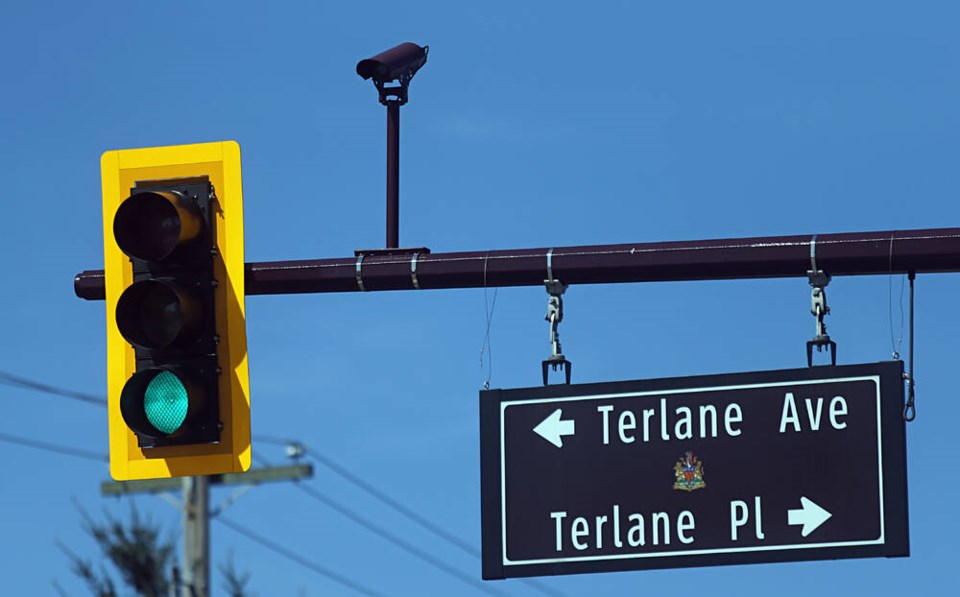A star quarterback, making $25 million a season, steps up in a seemingly wide open field and throws the ball directly into the hands of an opposing defensive back.
The best defence player on a hockey team skates out from behind his or her own net, then passes the puck cross ice directly onto the stick of an opposing forward.
A driver on a street with little traffic turns left at an intersection and strikes a clearly visible pedestrian in a crosswalk, crossing with the walk signal.
All three of these people have most likely suffered from the same problem: tunnel vision — a fixation on a narrow point of view where the brain ignores all of the other images and information their eyes were showing them.
Tunnel vision, however, is a broad term that is often misapplied to a number of human responses toward difficult or intense situations. In many cases, vision actually has nothing to do with the problem.
What’s really going on is sensory overload caused by stress. It’s more accurate to say that, in stressful moments, people suffer from “tunnelled senses.”
We see it every day on minor levels. Ever try to talk to a colleague who’s in the middle of sending an important email? How about trying to ask your kids about next year’s school term as they’re opening their Christmas presents? Forget it.
Small moments like these are inconsequential, even funny, as part of daily life. But when we’re driving, tunnelled senses are a really big deal.
“Tunnelled” driving could be just an annoyance — like the person who absolutely must make that left turn into a parking lot while waiting to turn over a solid line as cars pile up behind them.
But tunnelled driving can also be catastrophic — like drivers who veer across several lanes of freeway traffic, at 90 or 100 km/h, trying at the last second to zip onto an exit ramp — oblivious to five or six other cars around them. Or drivers fixated on passing that one last vehicle in front of them, heedless of the fact they’re now on the wrong side of a double solid line or a blind curve.
Many normal driving moments can become very stressful. When this occurs, the probability of tunnelling rises. You focus on a narrow geographic segment and ignore things in your periphery.
Tunnelled sensing can also include your hearing. This is known as auditory exclusion. It’s often experienced by soldiers and cops who find that after intense moments, often involving gunfire, they were completely unaware of colleagues also firing their weapons even though they were only inches away.
For the driver experiencing auditory exclusion, not hearing that approaching semi-truck or ambulance siren can be deadly.
Your brain can only process so much information, and stressful driving manoeuvres only add to the problem, but there are a few things a driver can do to help prevent severe tunnel vision moments.
Slow down. According to the Vision Zero Network, a worldwide non-profit dedicated to zero road fatalities, at 50 km/h your peripheral vision is about 104 degrees, at 65 km/h it’s reduced to 70 degrees. At 150 km/h your vision is reduced to 18 degrees.
Reduce the stress of complexity. If reaching your destination requires manoeuvres or navigation that push your driving skill and your stress to the maximum, consider another route. If there’s a tough left- hand turn with lots of traffic, consider going to a traffic light with an advanced left-turn signal or turning around somewhere safe and making that tough left- hand turn into a right-hand turn instead.
Deliberately turn your head and scan. Vulnerable road users are often struck down by drivers who are zeroed in on a gap in traffic and then try to turn quickly or whip into a free parking space. By mechanically turning your head back and forth and forcing your eyes to look around the entire area you’re headed into, you’ll be more likely to spot pedestrians, cyclists, bikers or maybe that oncoming cement truck. Ask: “What am I missing?”
Take a time out. If you’re caught in a highly stressful road environment, like the time I had to negotiate 10 lanes of Los Angeles freeway, it’s OK to pull over in a safe area and decompress. Stop, breathe and get the heart rate down. Good composure makes you and passengers safer.
Avoiding tunnelled senses starts with being aware of the issue and then accepting the limits it may place on your driving. Developing a habit of scanning all of the road environment is also critical.
Finally, manage stress by pre-planning and driving sensibly, so it doesn’t overwhelm your senses, for the times when you’ll need them the most.
>>> To comment on this article, write a letter to the editor: [email protected]



